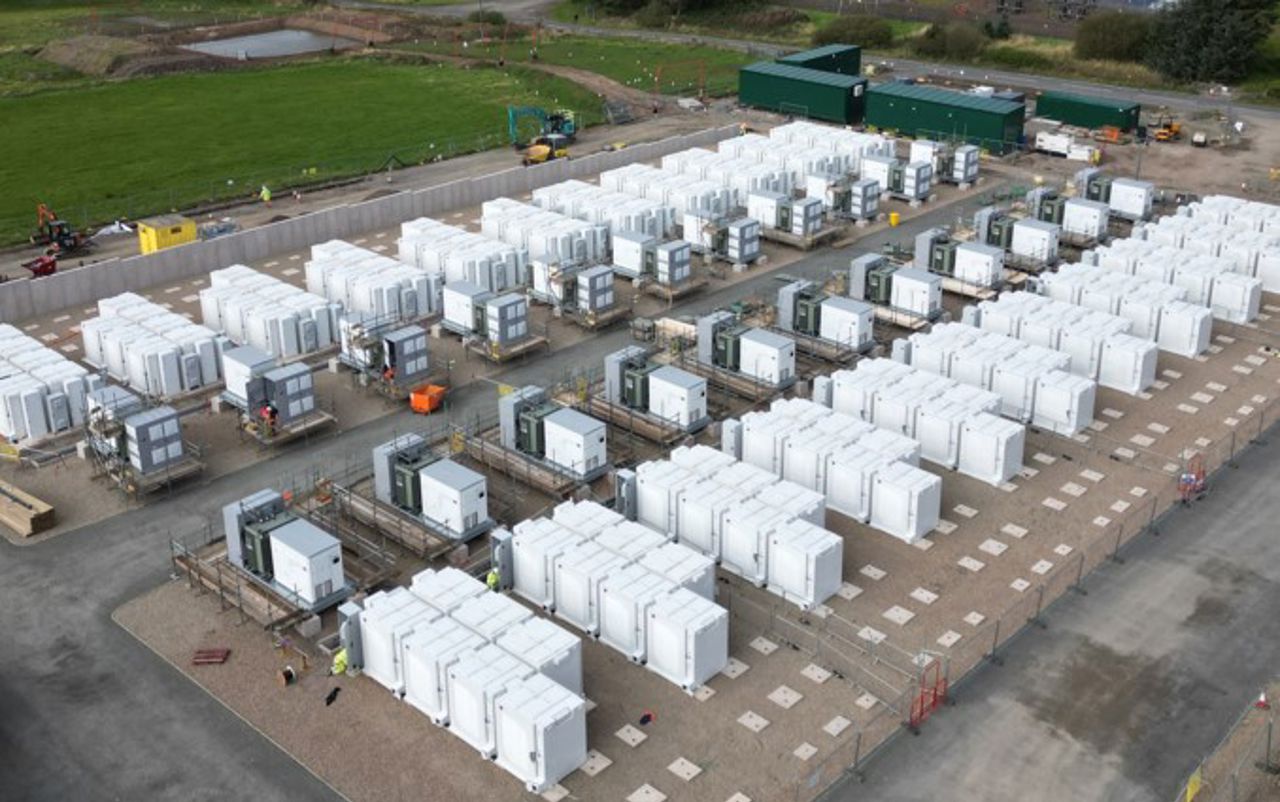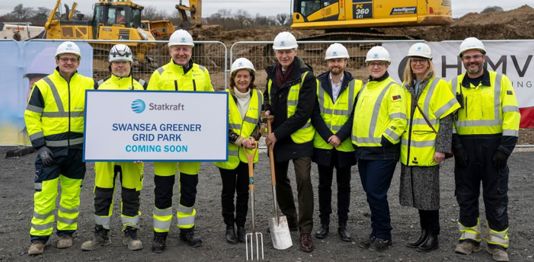
The role of BESS in the UK’s energy transition
The UK Government has set ambitious goals for transforming our electricity grid, aiming to fully decarbonise the power sector by 2035.

Securing a renewable grid: The role of BESS in the UK’s energy transition
Spring 2025
The role of battery energy storage systems (BESS) in securing GB’s low-carbon electricity grid
The UK Government has set ambitious goals for transforming our electricity grid, aiming to fully decarbonise the power sector by 2035.
Keeping the electricity grid stable is incredibly important, but most people never think about how it happens, and our aim is that you shouldn’t have to.
At Statkraft, we develop clever solutions, which we call Greener Grid Parks, using infrastructure at strategic locations across Great Britain, to help make our electricity network resilient and fit for the future.
- reducing our reliance on fossil fuels and other countries for our electricity targeting 95% low-carbon electricity by 2030,
- a major milestone towards a clean energy future
- maximising renewable energy generation
A low-carbon electricity grid is crucial for tackling climate change, and renewables, such as wind and solar, are an important part of this transformation. The transition to renewables needs to come with flexible solutions like BESS and grid stabilising equipment that step in to ensure an uninterrupted electricity supply. When combined with solutions that manage fluctuations in supply and demand, renewables will meet consumer demand cost effectively, providing a lower cost and reliable electricity supply.
Currently, GB is heavily reliant on fossil gas generation to balance energy fluctuations and maintain this grid stability. Yet the Intergovernmental Panel on Climate Change (IPCC) warns that fossil fuel emissions must be halved by the early 2030s if global warming is to be limited to 1.5°C above pre-industrial levels, the target identified as part of the Paris Climate Agreement.
If the UK is to achieve its own zero-carbon targets, whilst achieving greater energy independence and the associated benefits – such as less volatile and lower cost energy bills, it must reduce its reliance on fossil gas.
In the past, fossil fuel power plants have been used to manage grid stability and peak demand, but battery energy storage facilities are increasingly replacing these polluting power stations. Demand for UK grid energy storage is expected to is expected to rise to at least 46 gigawatt hours (GWh) by 2030.
We see the need to rapidly scale up low-carbon energy storage solutions, with batteries (or BESS) being a crucial component in the UK’s future energy mix.

Did you know?
The Government set a legally binding target to reduce the UK’s greenhouse gas emissions by 100% by 2050 compared with 1990 levels.
What is Net Zero?
Net Zero is the balance between the amount of greenhouse gas emissions that are produced and the amount that are removed from the atmosphere.
Battery technology offers a flexible solution
The future is in renewable energy generation, but our electricity grid infrastructure is still geared toward environmentally damaging fossil fuel technologies.
Without much-needed upgrades like Statkraft’s Greener Grid Parks, the grid will struggle to adapt.
According to NESO, Great Britain operates the fastest decarbonising electricity system in the world. Our Greener Grid Parks deliver a solution to the engineering challenge of removing fossil fuels from the UK's electricity supply and maximising the amount of renewable energy that can be distributed through the grid.
Whilst BESS provides stability to our electricity network, this technology can also capture and store energy for future use, enabling increased use of homegrown renewable electricity by storing it when demand is low and releasing it when demand is high.
Lithium-ion batteries, which are used in mobile phones and electric cars, are currently the dominant technology for large-scale storage, to help electricity grids deliver a reliable supply of renewable energy.
Lithium-ion batteries were developed by a British scientist in the 1970s and were first used commercially in 1991, for handheld video recorders. They are currently the most economically viable energy storage solution and offer:
- the ability to store energy efficiently and cost effectively
- long life, charging and discharging thousands of times
- safely storing enough energy to match demand
Keeping up with the pace of change
In the UK, a tenfold increase in BESS might be expected by 2050, from 5.8 to 65 GWh, to keep homes and businesses supplied with the energy they need 24/7 according to NESO, the organisation responsible for moving electricity around the system.
The global context
Globally, electricity demand is forecast to nearly double by 2050 and energy storage capacity must expand alongside this. This is already taking place - across the world over 40 GW of storage capacity was installed in 2023.
The EU is aiming to increase storage by approximately 45 GW by 2030. In 2023 alone, Europe installed 17.2 GWh of BESS, a 94% increase compared to 2022.
NESO hugely values the role batteries play today, helping to secure and balance the system in real time. There is a growing role for batteries in the future, with our forecasts seeing a need for four or five times the capacity we have today by 2030.

BESS technology helps save costs for consumers
The UK Government estimates that using technologies like BESS to support the integration of more low-carbon power, heat and transport technologies could save the UK energy system up to £40 billion by 2050, and could help to reduce people’s energy bills by improving efficiency. Furthermore, the UK Government’s Energy Security Plan, Powering Up Britain, aims to proactively secure the UK’s energy independence by reducing reliance on volatile international energy markets.
Frequently Asked Questions about a BESS project
Statkraft ensures its Greener Grid Parks are located at strategically important locations by consulting with NESO (National Energy System Operator) and examining other data to establish where there is expected to be a need for storage and grid stabilisation.
This can be influenced by a number of factors including:
- where energy is being generated/consumed across Great Britain
- time scales for when the project will be able to connect into the electricity grid
- whether substations have the physical space to accommodate new connections
Specific locations are identified through a careful assessment of the site and the area. Statkraft consults with technical specialists about subjects such as landscape, ecology, safety and flooding. Close proximity to the substation avoids lengthy transmission cables, maximises the grid stabilisation function of the Greener Grid Park and ensures an efficient connection to the grid whilst minimising environmental disturbance and cost.
BESS are typically housed in modular units which can be strategically located next to substations. This optimises space and infrastructure.
The core components of BESS include the batteries for storing energy, a system that monitors and manages them to ensure they operate safely and efficiently, and equipment that converts electricity for use by the grid. Together, these components work seamlessly to integrate energy storage with the power network.
A battery is a device that stores electrical energy as chemical energy that can be released on demand. Batteries can be rechargeable or non-rechargeable. Non-rechargeable batteries are typically used in household devices such as torches
Batteries, like the ones we use on BESS projects, are often made from smaller individual compartments, called cells, that can be linked together.
Rechargeable batteries, such as lithium-ion batteries, are used for applications that have greater energy demand – for example, mobile phones, electric vehicles and grid storage. These batteries operate on a simple principle. During charging, electrical energy is converted into chemical energy as tiny lithium particles and moves from one electrode to the other through a conductive material found in each cell. During discharging, the process is reversed, releasing the stored chemical energy as electrical energy.
Importantly, this process allows excess electricity to be stored and then released when needed, ensuring a reliable and consistent electricity supply.
- Rechargeable batteries can store and release energy many times
- Battery storage systems are far more advanced than typical household batteries
- These systems can be charged by renewable energy sources like wind and solar
- Intelligent software and computer control determine when to store or release energy to the grid
- Energy is released during peak demand to lower costs and maintain electricity flow
Frequently Asked Questions about BESS safety
Installing a grid-scale BESS requires planning consent, with rules varying across the UK.
In England and Wales, local planning authorities make decisions on BESS installations. In Scotland and Northern Ireland, approval depends on the system’s capacity and is granted either by ministers or local authorities.
Additionally, depending on its size, a BESS may need a generating licence, issued by Ofgem in Great Britain and by the Utility Regulator in Northern Ireland.
The government requires that BESS installations be covered by a robust regulatory framework.
Guidance published in August 2023 encourages developers and local planning authorities in England to consult their local fire and rescue service in preparing and deciding on planning applications for BESS. While lithium-ion battery fires have gained media attention, the technology’s overall safety record is strong and continually improving.
Safety is at the forefront and is embedded into our design, construction and operations activity. Safety management in lithium-ion energy storage systems involves multiple layers of protection to prevent hazards. The Statkraft approach goes above and beyond the regulatory requirements.
In operations, the primary layer is 24-hour monitoring via battery management systems (BMS), which track vital data, like the voltage, temperature and current of each cell. Operating autonomously, the BMS can reduce or disconnect power when abnormalities are detected, ensuring reliability and preventing risks.
It also predicts potential issues by assessing the health of individual cells, allowing operators to perform maintenance and keep the system ready to deliver power safely when necessary.
BESS planning applications include a Flood Risk Assessment and Drainage Strategy and sustainable drainage measures are designed into site layouts.
Sites are fenced off using high-security fencing at of a minimum of 2.4 m in height. We consult with local councils on the colour of the fencing, ensuring it blends in with the natural landscape and any adjacent substations.
If you are a local business, there will be an opportunity to register your interest on our website. We work with groups such as the Chamber of Commerce to maximise opportunities for local suppliers.
Related pages
Greener Grid Parks
As Great Britain generates increasing amounts of electricity from renewable sources, storage and innovative grid management is an essential component of a successful transition to a Net Zero energy...
Read more
About Statkraft UK
Statkraft has been making clean energy possible for over a century. Today, we are Europe’s largest renewable energy producer and a global company in energy market operations.
Read more